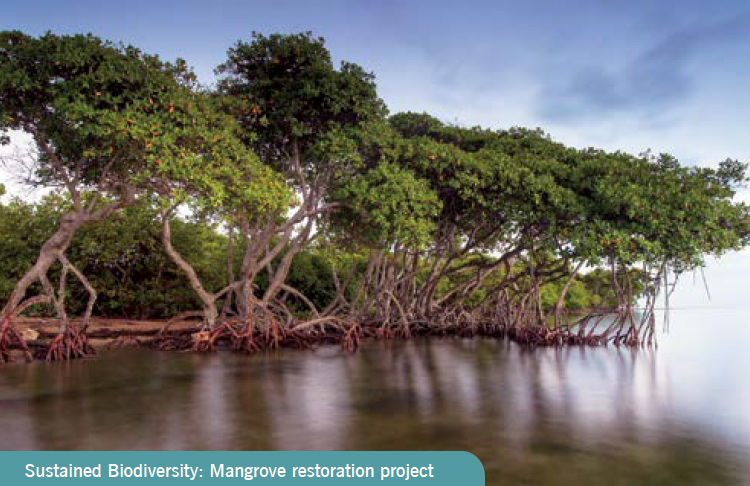The prime objective of the project was to undertake
rehabilitation activities to both mitigate impacts of the
extraction and our operations and respond to the needs of the
local communities. Considering the ecological sensitivities
of the region, ACL adopted a landscape approach; taking
into account the wider conservation objectives in the region.
Thus, the scope of the rehabilitation activities was widened
to include areas outside the quarries. Due to the water stress
in the area, particular focus was given to improve the water
management in the region.
Ambujanagar worked with local communities, natural resource
management experts, NGOs and local authorities to develop
the objectives. The Ambuja Cement Foundation (ACF), has
been instrumental in delivering on the outcomes.
The rehabilitation activities focused on the following key issues:
Capturing and preserving the freshwater: ACF implemented
several measures to improve water management in the area, primarily through rainwater harvesting, and converting the closed quarries into artificial lakes |
and wetlands. Number
of dams and small barriers have been built across the
direction of water flow, to reduce the velocity in shallow
rivers and streams to avoid runoff. Other measures include
interlinking rivers and streams, construction of percolation
wells, renovation and deepening of ponds and runoff diversion
systems which contribute to the capturing of rainwater and
recharging of existing farmers’ wells.
Quarry rehabilitation through planting trees: Different
species of trees have been planted as part of the restoration
of the mined-out areas and surrounding zone. The company
collaborated with the forest department for undertaking
plantation activities, on the periphery of the Gir forest, on
barren tracts of degraded land. The company is also planning
to grow Jatropha as a source of bio-fuel in the coming years.,
Conserving of the flora and fauna of Gir: The Ambujanagar
plant also supported the conservation of the Asiatic lion (Panthera leo persica), |









































